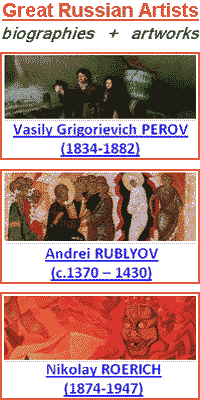The Emergence of Old Russian Literature
During the ninth and tenth centuries Old Russia turned from an unstable alliance of tribes into a united feudal state. Close diplomatic, trading and cultural ties with its southern and western neighbours brought the country into the sphere of European politics. The acceptance of Christianity marked a most important stage in the history of Kievan Russia.
There were Christians in Russia long before its official conversion. Olga (died 969), the wife of Prince Igor of Kiev, was a Christian, there was a Christian Church of St Elijah in Kiev, and some of the boyars and retainers were Christians, although Christianity did not become the official religion until the reign of Vladimir, in 988, according to the chronicle. The acceptance of Christianity conformed to the urgent requirements of princely power and feudal society. In religious-ethical terms it brought Russia even closer to the other Slav states which had already accepted Christianity by that time (Bulgaria, Bohemia and Poland) and also the largest and culturally most important state in South-Eastern Europe — Byzantium.
The consequences of the acceptance of Christianity were also considerable for Russian culture. Together with Christianity, writing and literature became widespread in Russia. This was a fundamentally new cultural phenomenon. There were people who could read and write in Russia before the acceptance of Christianity, and those who had embraced the new religion probably possessed books. But when Christianity was adopted as the state religion, there was an urgent need to acquire or copy a large number of books essential for performing divine service and preaching the Christian faith. What is more, the Christianisation of Russia required a radical changing of world outlook: pagan ideas of the origin and structure of the universe, the history of the human race and the ancestry of the Slavs were now rejected, and Russian scholars needed works to expound the new, Christian views of world history and provide a new, Christian interpretation of the world and the phenomena of nature.
Although the young Christian state’s need for books was very great, the possibilities of satisfying it were very limited at first: there were still few experienced scribes in Russia, the actual process of copying was very lengthy, and books were extremely expensive. The earliest manuscripts were written in uncials, large, geometrically strict letters that were not joined, so that books were drawn, rather than written. Joined letters did not appear until the sixteenth century. Books were written on parchment, which in both Western Europe and Russia was not replaced by paper until the fourteenth or fifteenth century. Consequently books were commissioned either by the rich, the princes and boyars, or the Church.1
Nevertheless book copying assumed considerable proportions in Kievan Russia. The oldest Russian chronicle, The Tale of Bygone Years, says under the year 1037 that Prince Yaroslav the Wise of Kiev (1019-1054), who was well-read, assembled scribes who translated and copied many books. This is borne out by the fact that a large number of Christian churches were functioning at that time, whose services could not have been performed without liturgical books, and also that eleventh-century Russian authors quote Byzantine works (chronicles, homiletic literature, vitae, etc.), which must have been available to them in Slavonic translation. Of course most of the books that were copied and translated were liturgical texts or works that expounded Christian philosophy and Christian morals. But scribes also brought from Bulgaria translated or copied works of different genres: chronicles, historical and popular tales, scholarly writings, and collections of sayings.
Out of more than 130 manuscript books of the eleventh and twelfth centuries now in Soviet archives and libraries about 80 are liturgical ones.2 This is explained not only by the fact that they comprised the main body of texts reproduced (which was dictated by the needs of the Church) but also because these books were kept in stone churches and therefore less likely to be destroyed in the frequent fires to which wooden buildings, including the palaces of the princes and boyars, were particularly vulnerable. So precisely which books or works and how many copies were circulating in Russia in the eleventh and twelfth centuries we can only surmise from indirect evidence, for the manuscripts that have survived represent only an insignificant proportion of them.
Nevertheless it can be said that the literature of Kievan Russia dealt mainly with philosophical questions. Its system of genres reflected the philosophy typical of many Christian states in the early Middle Ages. The characteristic features of the literature belonging to the earliest period of Russian history were summed up by Dmitry Likhachev as follows: “Old Russian literature can be seen as a literature with a single theme and a single subject. The subject is world history, and the theme is the meaning of human life.”3
 History of Russian Literature
History of Russian Literature
